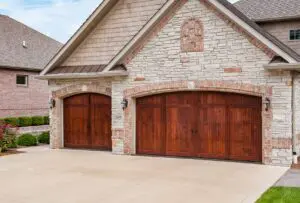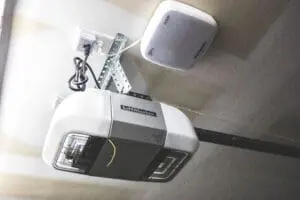
How Much Does Garage Door Repair Cost in 2025?
Tired of holding the garage door button just to get it to open or close? Learn the common causes, easy DIY fixes, and when to call Welborn Garage for expert help.
Ever come home, hit your LiftMaster opener button, and watch the whole system flash? Those blinking lights are trying to talk to you.
LiftMaster uses diagnostic codes to let you know there’s a problem.
Understanding these codes helps you fix issues faster, avoid bigger problems later, and keep your garage door opener operating properly.
At Welborn Garage, we’ve helped thousands of Dallas‑Fort Worth homeowners decode these flashing signals. Let’s break them down.
LiftMaster openers (post-2011 models) use a combination of:
Each combo points to a specific issue
What it means: Photo‑eyes (safety sensors) are misaligned, blocked, disconnected, or have broken wires .
Symptoms: Door starts closing, then reverses or stops. Lights click 10 times, or arrows show 1‑1 .
DIY fix:
What it means: Wires are reversed or shorted between sensors
Symptoms: Same as 1‑1, but lights blink 1‑2.
DIY fix:
What it means: Wall button wiring is shorted or broken .
Symptoms: Wall button doesn’t open door and error shows 1‑3.
DIY fix:
What it means: A sensor issue showed up briefly during a close cycle
Symptoms: Door stops and reverses mid-cycle; arrows flash 1‑4.
DIY fix:
What it means: The opener can’t talk to the travel module (limits system)
Symptoms: Door stops early or won’t close. Light arrows flash 1‑5.
DIY fix:
What it means: Door moved after opener motor shut off at top position .
Symptoms: Door drifts down slightly after fully opening.
DIY fix:
What it means: Internal opener circuit board issues
Symptoms: Opener doesn’t do expected actions; lights flash Up‑2/Down‑1 through 2‑5.
DIY fix:
What it means: The opener sensed too much resistance—door might be binding or spring is broken
Symptoms: Door stops/grounds mid‑travel, arrows flash codes like 4‑2.
DIY fix:
Same as above but flagged during a close cycle
Fix: Reconnect wiring, reset limits, replace module if needed.
What it means: Gate tried closing during sensor issue and stopped .
Symptoms: Light arrows flash, door stops mid-cycle.
DIY fix: Check sensors again—clean, align, remove blockages.
What it means: RPM sensor didn’t get expected signal—door stuck or slow .
Symptoms: Door moves a few inches then stops. Indicators flash 5‑5.
DIY fix:
Adjust limits/force – keep screw turns small
DIY is great—but some fixes demand the pros:
If your opener triggers multiple codes regularly, it might be time for an upgrade. New models come with:
A modern opener costs more upfront—but saves in repairs and adds home value.

Don't let your garage project, just be a project. Schedule today, and make your garage the centerpiece of your home!

Tired of holding the garage door button just to get it to open or close? Learn the common causes, easy DIY fixes, and when to call Welborn Garage for expert help.

Tired of holding the garage door button just to get it to open or close? Learn the common causes, easy DIY fixes, and when to call Welborn Garage for expert help.

Tired of holding the garage door button just to get it to open or close? Learn the common causes, easy DIY fixes, and when to call Welborn Garage for expert help.